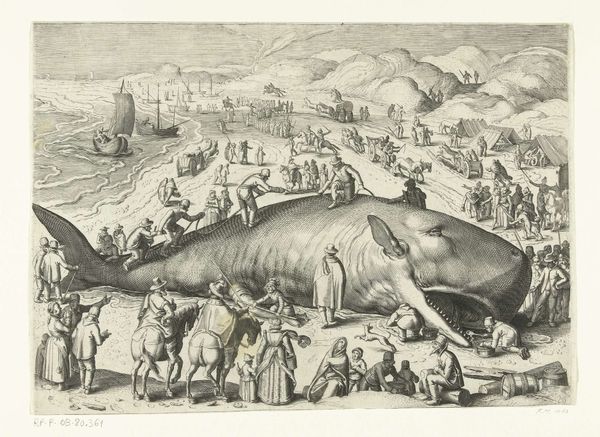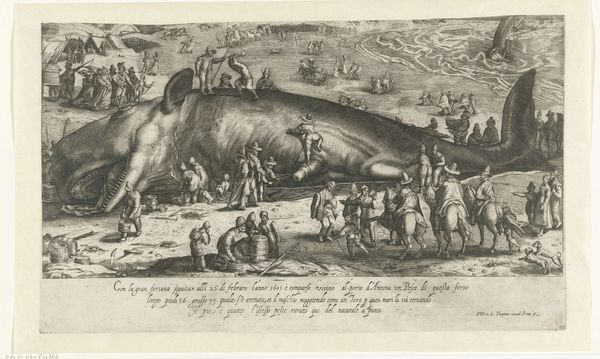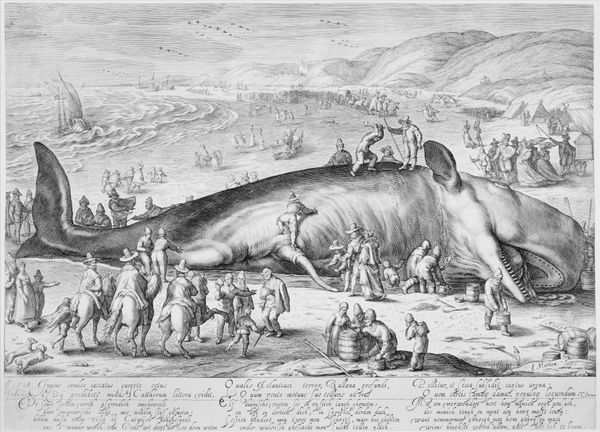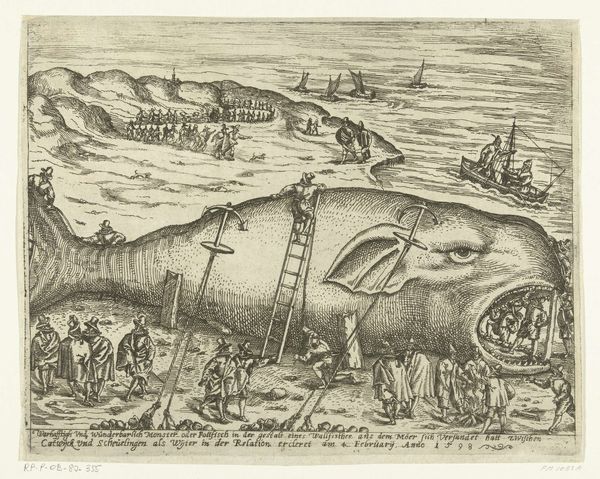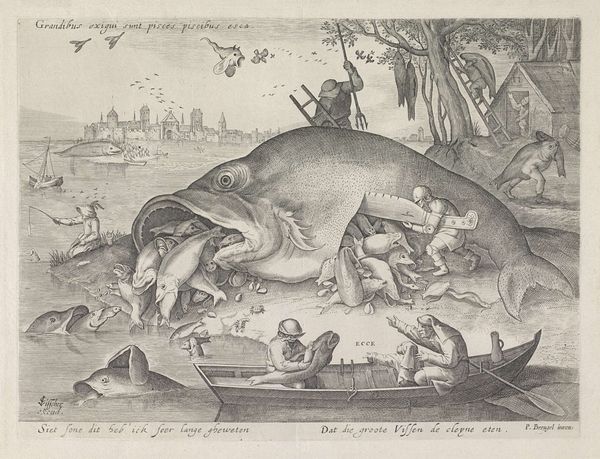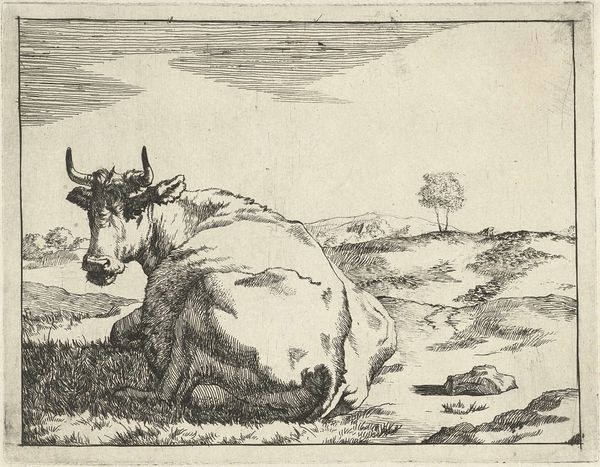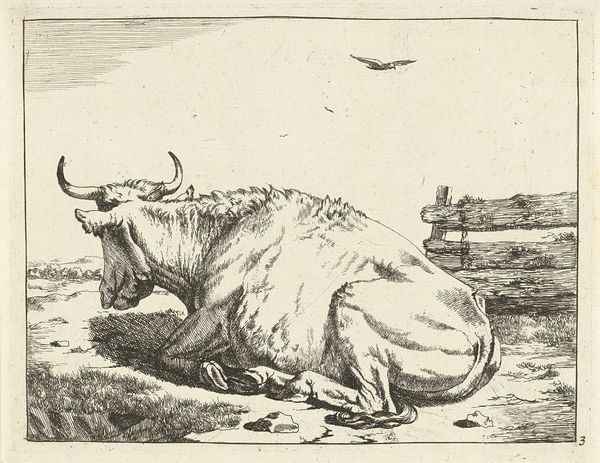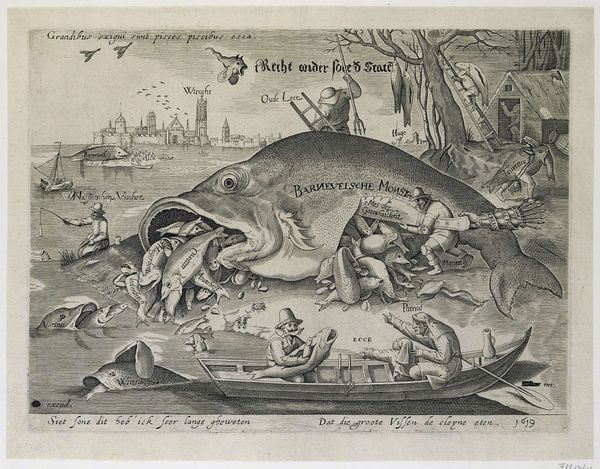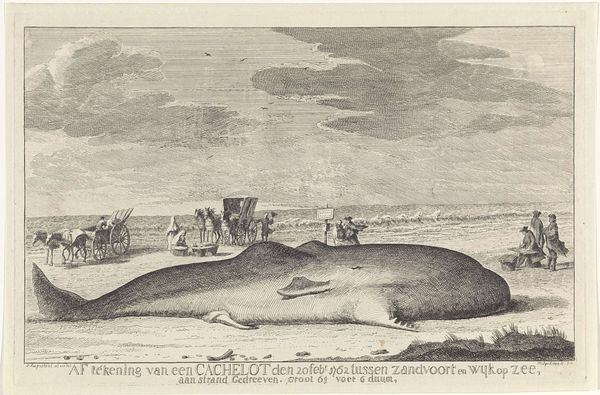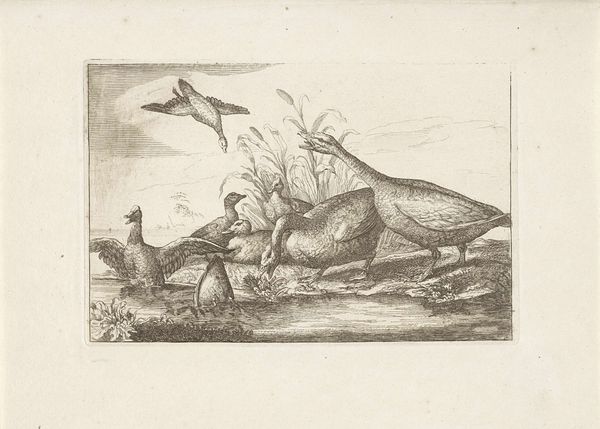
print, etching
#
ink drawing
#
narrative-art
#
dutch-golden-age
# print
#
etching
#
landscape
#
genre-painting
Dimensions: height 113 mm, width 170 mm
Copyright: Rijks Museum: Open Domain
Editor: This etching, "Stranded Whale at Wijk aan Zee, 1601", was recreated between 1917 and 1919 based on earlier imagery, apparently by A.B. van Deinse. The scene is… strange, almost unsettling. People are swarming this enormous dead whale on the beach. What's your take on this? Curator: It’s fascinating how the image collapses the boundaries between the natural world and human industry, isn’t it? Think about the labor involved in processing a whale carcass in 1601. Editor: Right, that does put things into perspective! Curator: What tools would they have been using? How were they dividing up the labor? This print, as a later recreation, asks us to consider how we represent such processes. The artist wasn't merely depicting an event but also the relationship between labor, consumption, and representation. Editor: So, the materials involved – the whale, the tools, the eventual products like oil or bone – and the labor extracting them, those are central to the meaning? Curator: Exactly. Consider also the social dynamics displayed. What does the print tell us about community, property, and exploitation? Were they salvaging, claiming, or stealing from this huge, beached commodity? Editor: It kind of makes you think about contemporary issues too, like our dependence on unsustainable resources… Curator: Precisely. And the making of this print itself involved skilled labor using specific materials - acid, metal plate, paper, ink... Editor: That is fascinating – how the artistic process parallels the event depicted, reflecting broader economic and societal forces! Curator: It's a striking reminder that even depictions of nature are deeply intertwined with human processes and material realities. We aren't looking "through" art here, but focusing on its status *as* a material object embedded in material culture. Editor: Well, I’ll never look at a historical landscape print the same way again! Thanks for widening my perspective.
Comments
No comments
Be the first to comment and join the conversation on the ultimate creative platform.
